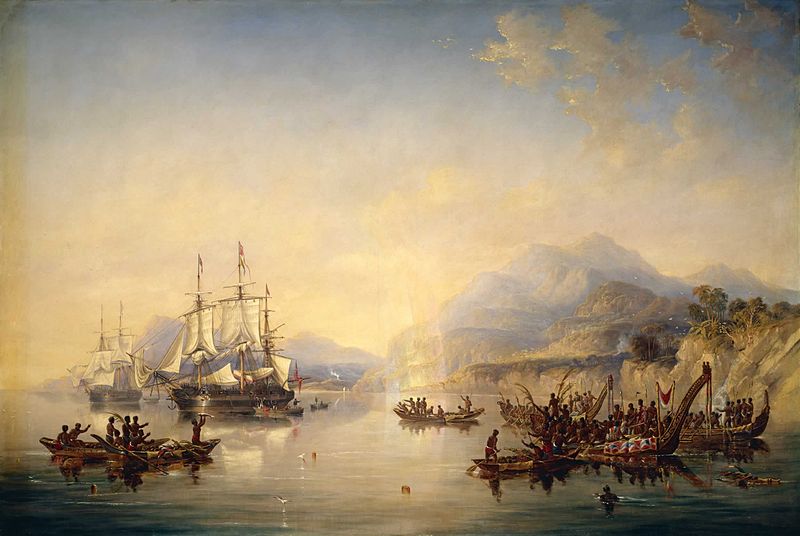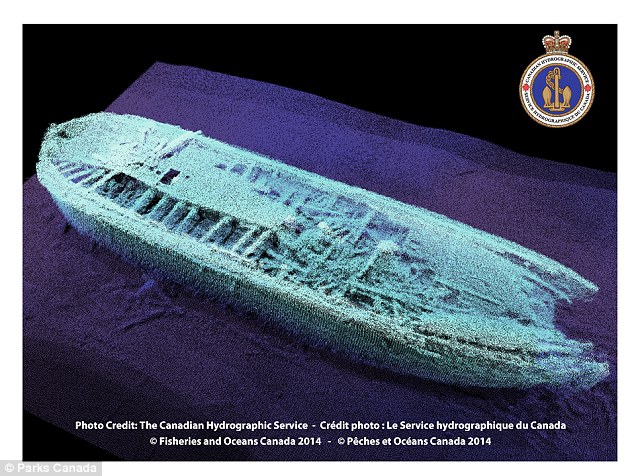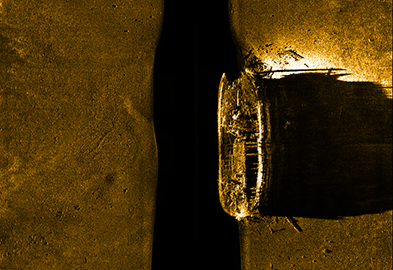Two years ago Canadian divers found a bronze bell near the wreckage of the HMS Erebus. The shipwreck, which was surprisingly well-preserved, was found in September of 2014 near King William Island.
John Franklin was the captain of HMS Erebus when it and its sister ship, the HMS Terror, sailed on May 9, 1845 in search of the Northwest Passage. They were last seen in August of that year near Baffin Bay. Both ships had a crew of about 129 men total, and both were abandoned after becoming stuck in the Arctic ice.
However, those who abandoned the ship eventually perished to either hunger or the freezing temperatures. Some historians even believe that some of the men resorted to cannibalism to lengthen what little life they had left.
The bronze bell was found on Franklin’s ship, intact on the deck. Archaeologists said that the bell was actually in good condition. It has features of an embossed Royal Navy broad arrow on it, suggesting that it is property of the British Government. It also has a date embossed on it – the year it was cast.
The bell is a symbolic embodiment of the ship itself, according to naval traditions. On HMS Erebus it would have originally been used for marking the passage of time. Like a clock, the bell would be rung every half hour, day and night, to let the crew know it was time change the watch.

The bell was found on the last day of the two-day exploration of the shipwreck. Leona Aglukkaq, the Minister of the Environment, said that finding this bell and ship marks a major part of Canadian history. It is also evidence that Franklin actually sailed in those areas on his voyage. Divers took measurements and photographs of the ship. The bell and other artifacts were sent to a lab in Ottawa for further investigation, and experts in Ottawa spent two months analyzing the bell. In order to prevent deterioration of the bell, it sat in a glass container filled with water.
Marc-Andre Bernier, who was the head of Parks Canada’s underwater archaeology service, said that when one of the team members found the bell all they could hear on the intercom system was, “I found the bell!” He said that the team was not supposed to recover artifacts from any of the wreckage they found. However, since the bell was such an iconic piece of history, the decision was made to bring it up to the surface.
Along with the bell, the divers found pulley blocks, ropes, and two brass cannons. However, those had been left in the water until the Arctic ice finally disappeared and a team could return to the shipwreck. After conservationists finish with the bell, they will put it on display. The preservation process, including removing all of the salt, could take up to two years.
The finding of the bell even caught the attention of Stephen Harper, Canada’s Prime Minister. He had told Parliament that the experts had found the HMS Erebus; that Franklin had most likely captained the ship and died on it. Harper’s office eventually reviewed data about what artifacts were found on the site and which ones were left where they were found. Thankfully, the diving crew took photos of everything they found, supporting their discoveries.

In 2008, Canada had decided to fund the expeditions for finding the sister ship, giving thousands of dollars towards it. Even Harper got to take part in the search – his government was told to make the project a top priority in order to assert Canada’s sovereignty over the Northwest Passage.
Thankfully, the melting of the Arctic ice in recent years unlocked the passage Franklin was trying to find. Canada still claims, today, the passage is theirs, while the United States and other countries claim that the passage is actually international territory.
The president of the Royal Canadian Geographical Society, John Geiger, said that this finding of the HMS Erebus is more exciting than if they had found HMS Terror, as Franklin was the commander on the HMS Erebus, making it more historically relevant. Geiger also said that he and other historians believed that the HMS Erebus was Franklin’s ship due to the size of the captain’s cabin, as well as other factors.
Geiger also added that the ship was largely intact at the time it went down. Unlike other ships, it is not just a hollow hull. He described it as a time capsule, and with the ship still intact historians and archaeologists can learn from it. The two sister ships have been sought after for a long time. The mystery of the disappearance of the ships has been mentioned in songs, poems, and novels.

Franklin and his 128 men had set out on a voyage to find the Northwest Passage, otherwise known as the shortcut to Asia, which ran from the Atlantic to the Pacific, having to make it through the dreadful Arctic. Historians believe the ships were lost in 1848 and were abandoned after being stuck in the ice. The crews left the ships in hope of finding safety. Inuit legends talk about the white men who were starving in the winter of 1850 on the Royal Geographical Society Island. Many years after Franklin was lost at sea, he was celebrated as a Victorian-era hero.
Dozens of other British and American ships and crews in the 1800s failed to find Franklin’s ships. Some of those ship that took part in the search suffered tragedy as well. However, they helped open up parts of the Canadian Arctic through their searches, and added to the knowledge of the Northwest Passage.
The Arctic Passage had been searched for by many over the years. The first man to set out to find it was John Cabot in 1497. Others who searched were Henry Hudson and Francis Drake. No one was successful until Roald Amundsen of Norway completed his trip over the years of 1903 to 1906.
Today, there still aren’t any definite plans to excavate the HMS Erebus. The exact location of the wreckage has been kept a secret so that the ship is protected from looters. The HMS Terror still has not been found.
